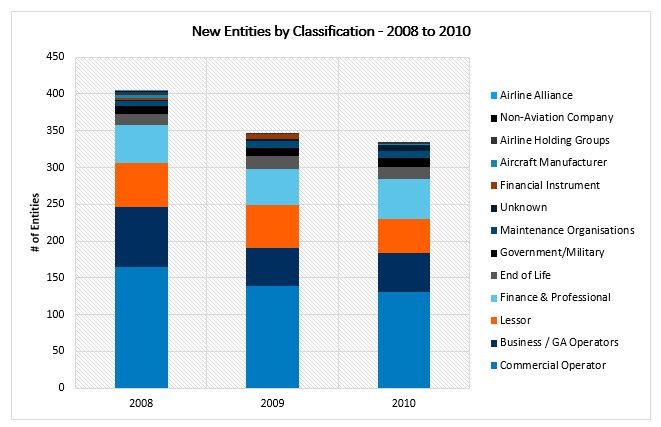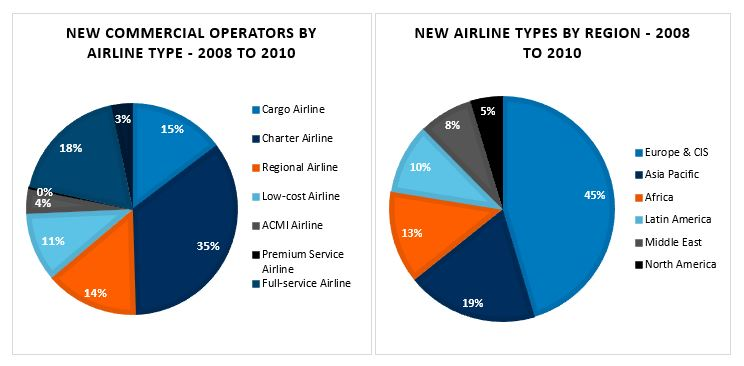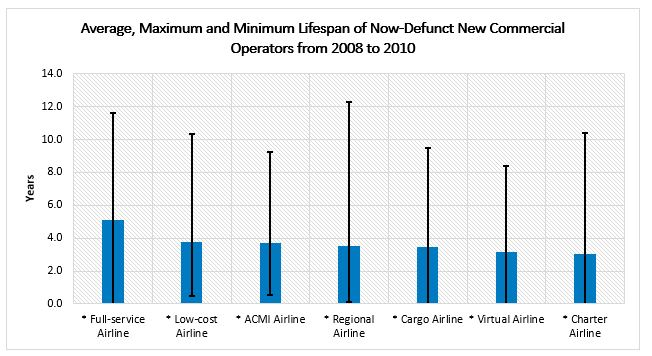13/07/2021
While it is becoming clear that the post-pandemic market is providing an opportunity, are global crises in general a breeding ground for brave and bold start-ups?
Using data from IBA's aviation intelligence platform InsightIQ, we recently highlighted that over 130 start-up airlines are planning to commence operations in 2021-2022. Most recently, Norwegian low cost carrier Flyr launched operations using a Boeing 737-800 in June 2021. We have used historical aviation intelligence to examine start-up trends following a significant shock in recent history - the 2007/2008 Global Financial Crisis (GFC). We have classified entrants to the market as 'entities', within which commercial airlines are included.
According to data taken from InsightIQ, a modest boom in start-ups occurred immediately following the GFC in 2008. Around 150 new commercial airline operators emerged in 2008, representing the lion's share of 400 new entities to arrive in that year. These new operators continued to appear in 2009 and 2010, though with a slight drop in the overall number of entities year-on-year. Combining this with more recent data on post-pandemic start-ups, we can infer a potential trend towards these operators taking advantage of discounted operating costs and availability of aircraft following global crises.

Over 50% of the new entities in the 'commercial operators' segment could be considered as truly 'new' start-up airlines. The remainder were airlines already in existence which either revived previous operations (typically through new ownership/investment), rebranded as a new airline, or took one of the aircraft types currently covered in InsightIQ system for the first time.
Following the Global Financial Crisis, the majority of emerging start-ups were European charter airlines (though closely followed by full service airlines) Cargo and regional airlines also appear in significant numbers. Most of these airlines were based in the Europe & CIS region, followed by 24% in the Americas, and 13% on the African continent - closely mirroring the split we see for 2021-2022 planned start-ups.


Only 67 of the 218 new airlines that started in the 2008 to 2010 period are still in operation globally. That represents a 70% failure rate and an average of a 3.5 years lifespan. Choices made in areas such as type of airline operation, network, fleet planning and financial backing will be key drivers of survival. It is clear that factors such as discounted operating costs and low-priced aircraft can provide a fertile ground for emerging operators, but history tells us to be cautious, and that investors, lessors and operators alike should understand the inherent risks and potential rewards of start-ups.
If you have any further questions please contact Marlon Tull.

IBA's InsightIQ analysis platform flexibly illustrates multiple asset, fleet and market positions, actual and potential, to inform client choices and identify acquisition opportunities. Immediate access to crucial aircraft, engine, lease rate and fleet data eases appreciation of historic and future aircraft concentrations and operator profiles.